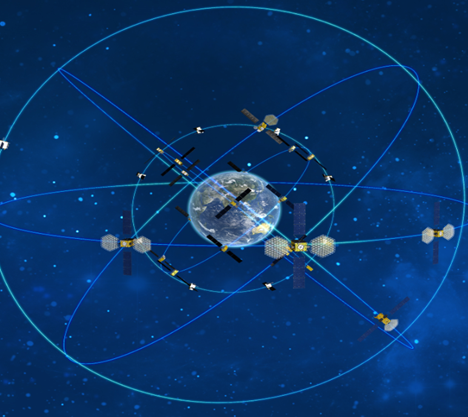Classification of GNSS antennas
GNSS (Global Navigation Satellite System) antennas are critical devices for receiving satellite signals and converting them into navigation and positioning information. Depending on their design and purpose, GNSS antennas can be divided into different categories. The following are several common GNSS antenna classifications:
1. Single Frequency and Multi-Frequency Antennas: According to the frequency used by the GNSS satellite system, the antenna can be divided into single frequency and multi-frequency antennas. Single-frequency antennas are suitable for single-frequency GNSS systems (such as GPS) that can only receive signals at a specific frequency. Multi-frequency antennas can receive signals at multiple frequencies at the same time, and are suitable for multi-frequency GNSS systems (such as GPS L1/L2/L5, Glonass L1/L2, and Galileo E1/E5a/E5b, etc.). Multi-frequency antenna has higher positioning accuracy and robustness, which can improve the suppression of signal interference and multipath effect.
2. Built-In and External Antennas: Built-in antennas are installed directly inside GNSS devices, such as mobile phones, tablets, car navigation systems, etc. Such antennas are usually small, but signal reception is limited by the physical structure and materials of the device. The external antenna is separately installed on the outside of the device and connected to the device through a connection cable (such as a coaxial cable). External antennas have better reception than internal antennas, but they need to be installed and arranged separately.
3. Active and Passive Antennas: Active antennas enhance the strength of the received signal through built-in amplifiers or low noise amplifiers (LNA) and improve the sensitivity of GNSS. Passive antennas do not have built-in amplifiers, and only receive and transmit signals through the antenna's own design.
4. Fixed and Mobile Antennas: GNSS antennas can be divided into fixed and mobile antennas according to different application scenarios. Fixed antennas are usually used in scenarios that require long-term installation, such as fixed measurement stations and permanent reference stations. These antennas usually have high accuracy and anti-interference capability. The mobile antenna is suitable for vehicles, ships, aircraft and other mobile applications that require real-time positioning and navigation. These antennas typically have smaller, lighter designs to adapt to complex and variable environmental conditions.
Factors Affecting GNSS Antennas
GNSS antenna performance is affected by a number of factors, some of which are listed below:
1. Antenna design: Antenna design includes antenna structure, size, shape, material and impedance matching. Reasonable antenna design can achieve better receiving effect and anti-interference ability.
2. Antenna gain: Antenna gain refers to the ability of the antenna to radiate energy in a certain direction. The higher the antenna gain, the higher the sensitivity of the signal it receives, and the weaker the signal it is able to receive.
3. Antenna pattern: The antenna pattern describes the antenna's ability to receive signals in different directions. It can determine the antenna positioning accuracy and signal reception effect.
4. Spurious response and multipath effect: spurious response is caused by the reflection and refraction of other objects before the signal reaches the antenna. The multipath effect is caused by signal interference and reflection when the signal reaches the antenna through different paths. These effects can reduce signal quality and positioning accuracy.
5. Antenna position and occlusion: the position of the antenna and the surrounding environment have a great impact on signal reception. The antenna should be as far as possible to avoid being blocked by tall buildings, trees, mountains and other objects to reduce the blocking and blocking of signals.
6. Signal interference: GNSS antennas are susceptible to interference from electronic equipment, electromagnetic interference sources, radar, radio signals, etc. These disturbances can affect signal quality and positioning accuracy.
7. Antenna calibration and calibration: In order to ensure the accuracy and consistency of antenna performance, regular antenna calibration and calibration is necessary. This can improve the positioning accuracy and signal receiving ability of the antenna.
To sum up, the classification and influencing factors of GNSS antennas are crucial to the performance and reliability of GNSS positioning and navigation system. For different application scenarios and requirements, selecting the appropriate antenna type and considering the antenna design, gain, direction pattern, position, occlusion and interference can improve the performance and use experience of GNSS system.
AFU TELECOM is a Wireless Telecom Solution provider with professional supporting on our customers' business globally. AFU TELECOM is always focusing on and specializing in O-RAN, Marco Cell, Small Cell, Active DAS, Public Safety and Optics Network Solutions including Antennas, Filters/Combiners/TMAs, RF Repeaters, Optics Devices and Site Accessories, especially AFU Core Team are very professional in wireless telecom with rich experience on our product portfolios. The Highest Priority of AFU TELECOM is Customers' Satisfaction and Product Quality. AFU MISSION IS TO CONNECT EVERYTHING!


